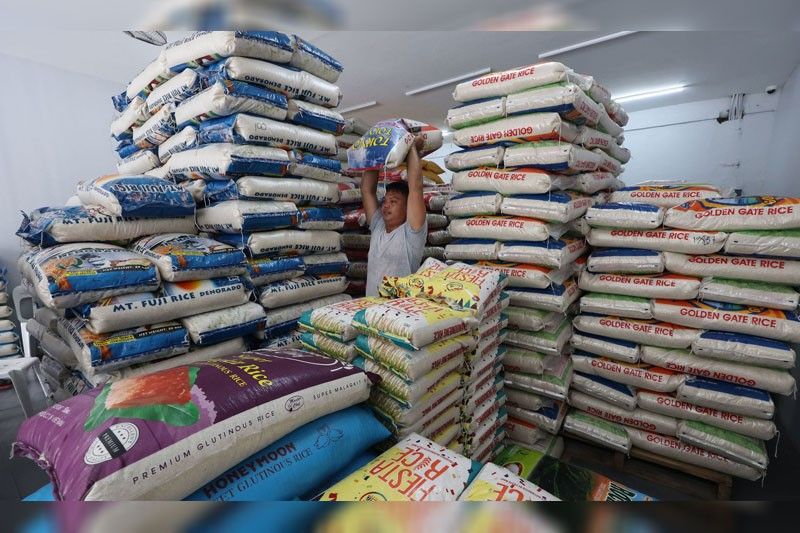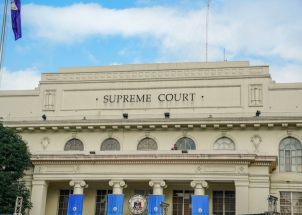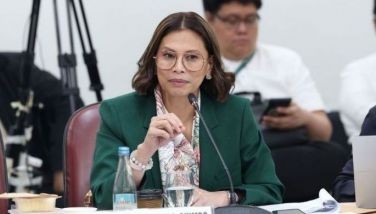Marcos Jr. lifts rice price cap, vows aid for farmers

MANILA, Philippines — President Marcos has lifted the price ceilings on rice as he vowed to sustain efforts to help improve the life of farmers and run after smugglers of agricultural goods.
“As of today (Oct. 4), we are lifting the price caps on rice, both for the regular milled and the well-milled rice,” Marcos said after distributing rice to beneficiaries of the government’s cash transfer program in Taguig yesterday.
“We removed the controls, but it does not mean it will end there because we need to fix the agricultural sector. We still need to help the poorest, the hungry, so they recover somehow,” he said.
To address the rising rice prices, the Marcos administration set price caps on the food staple through Executive Order No. 39, which took effect last Sept. 5.
Under the order, the price ceilings of regular milled and well-milled rice were P41 and P45 per kilo, respectively.
The government provided financial aid to small rice retailers affected by the price cap.
Nearly a month after the implementation of the price ceiling, the Department of Agriculture (DA) announced that the government is ready to lift the policy, citing the drop in prices of the staple in international and domestic markets as well as the expected increase in supply due to this year’s harvest.
The agency is expecting some 1.9 million metric tons of rice this month, which will be sufficient for 74 days.
Last month, the supply of rice was only good for 52 days.
Marcos, who is also DA chief, said that while market movements are uncontrollable, the government could provide assistance to sectors hit by an increase in the prices of commodities.
He said the Rice Tariffication Law allocates P10 billion every year for the Rice Competitiveness Enhancement Fund (RCEF).
The RCEF was established to protect the livelihood of farmers affected by the influx of imported rice.
Marcos said the collection from rice tariff will be used to acquire farm machinery to boost production.
He said the collection, which has reached over P12 billion this year, would also be used to distribute equipment to farmers and fishermen.
“The RCEF, from the expenditure of only P10 billion, will now be P22 billion in that regard so we can fast-track the distribution of assistance to our farmers,” Marcos said.
Despite the lifting of the price ceiling on rice, the Department of Trade and Industry (DTI) said the distribution of financial aid for qualified rice retailers affected by the measure will continue.
At a press conference yesterday, Trade Secretary Alfredo Pascual noted that the government will complete the one-time assistance program despite the lifting of price cap.
Metro Manila problem
Marcos admitted that rice prices in Metro Manila remain high.
“That’s natural because we are in a city. It takes time before rice is transported here. The cost of transportation is high. There are storage (and processing) fees, that’s why prices here in the NCR are increasing,” he said, referring to the National Capital Region.
Marcos said he told Speaker Martin Romualdez that something must be done to address the situation in the metropolis.
“We are lifting the price cap but beside that, we are taking other measures to help farmers in terms of their equipment, their processing, et cetera. We are also concentrating on the NCR because that is where the prices are most volatile and highest,” the President said, adding there is no problem in supply.
Smuggling raps
Marcos bared that the government has filed charges against four rice smugglers as he warned that the government would not tolerate activities that sabotage the economy.
He said smuggling charges have been filed against the owners and operators of the San Pedro Warehouse, Blue Sakura Agri Grain Corp., FS Ostia Rice Mill and Gold Rice Mill.
The respondents were charged with violations of the Customs Modernization and Tariff Act, Rice Tariffication Law and the Anti-Agricultural Smuggling Act of 2016.
“We are now in a new Philippines. We will fight those who are not playing fair. There is no room in society for those who take advantage of and oppress their fellowmen,” Marcos said in Filipino.
He said the government is serious in curbing smuggling, hoarding and other illegal activities that affect the supply and prices of goods in the market.
The lifting of the price cap on rice will encourage farmers to continue boosting local production and hopefully, bring down retail prices amid the harvest season, according to farmers’ groups.
Federation of Free Farmers national manager Raul Montemayor said President Marcos’ decision to lift the price ceilings on rice would provide another boost to farmers.
“It will stabilize palay prices during the ongoing harvest season and provide incentives for farmers to expand their production and reduce our reliance on imports. As fresh harvests enter the market, we also expect retail prices of rice to go down without the need for price caps,” Montemayor said.
“The government will have to pursue its campaign against smugglers and price manipulators whose illegal activities depress farmgate prices even as they keep retail prices high for consumers,” he said.
Bantay Bigas spokesperson Cathy Estavillo said the lifting of price cap coupled with local harvest could hopefully cut retail prices for consumers.
To help further cut down retail prices, Bantay Bigas reiterated its call to repeal Republic Act 11203 or the Rice Tariffication Law to allow the National Food Authority (NFA) to trade rice again.
“The mandate of the NFA in rice trading should be immediately restored so that it can sell subsidized rice that it used to do at P27 to P32 per kilo,” Estavillo said.
The group said the NFA should also increase its rice buying from farmers by buying fresh palay and “at least 20 percent of local production at a price of at least P20 per kilo in rice to ensure that the role is no longer just buffer stocking but to sell affordable rice in the markets.”
Estavillo said the price cap was implemented without conducting a study.
“The government implemented the price cap just to say that it was doing something because during that time, there was discontent among Filipinos in the government, especially with the promise of P20 per kilo (of rice),” Estavillo said.
She said that traders, millers and importers were behind the price manipulation to justify the increase in the price of the staple.
The Samahang Industriya ng Agrikultura (SINAG) thanked Marcos for lifting the price ceilig on rice.
SINAG executive director Jayson Cainglet said there was no rice shortage and that price increase was due to hoarding, profiteering and smuggling.
Meanwhile, wholesale prices of rice have started to slide down as the palay harvest season starts to peak.
Rice traders at the Intercity Industrial Estate and Golden City Business Park in Bocaue, Bulacan, confirmed to The STAR that the prices of clean and dry palay average at P25 to P26 per kilo depending on quality and variety.
Processing palay into rice results in additional production cost at 60 percent milling recovery, and this translates to P38 to P40.63 per kilo, the traders said.
However, the production cost may go higher or lower depending on the milling recovery rate. – Danessa Rivera, Bella Cariaso, Catherine Talavera, Ramon Efren Lazaro
- Latest
- Trending





























